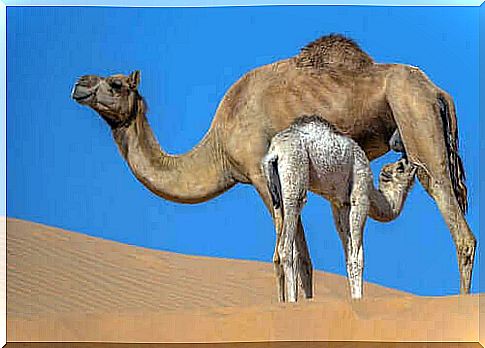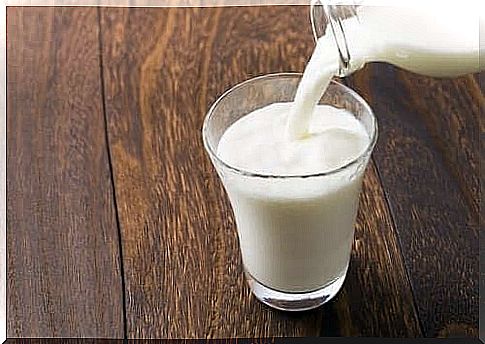Properties And Benefits Of Camel’s Milk

Have you ever heard of camel milk? It is a fairly popular beverage in some areas of the world. In fact, it is often the only dairy product available in some area. There are several benefits to camel’s milk.
Milk is widely used throughout the world. Although the most traditional is cow’s milk, there are a wide variety of animal species that produce milk. Humans get it from camels, goats and buffaloes, among other things.
Although all milk contains valuable nutrients, its composition depends on the species from which it comes. In addition, keep in mind that its intake depends on the geographical area and availability.
A cow (a female camel in this context) can produce between one and 12 liters of milk a day depending on the quality of her feed and the amount of water she consumes. A special feature of this species is that it can maintain a constant production rate in situations of insufficient access to food.
Properties of camel’s milk
Just like the milk of any other animal, camel milk contains many nutrients that can really benefit the human body. What is its chemical composition? How is it different from cow’s milk? Read on to find out.
Vitamins and minerals
Except for sodium, these are pretty much the same as those found in cow’s milk, and it is in similar amounts. The content of minerals varies in concentration by up to 5% in situations with limited water.
A glass of camel’s milk provides 150 calories, contains the same amount of calcium as seven bones with bones and as much potassium as a banana. Its vitamins are the same as those found in cow’s milk, but in different proportions. In addition, it provides less riboflavin, folic acid and panthotenic acid, while it provides up to five times as much niacin and vitamin C.
According to the Food and Agriculture Organization of the United States (FAO) , this milk is an important source of vitamin C for people living in arid and semi-arid areas. This is good because these populations often do not have access to fruit and vegetables.

Camel milk is a good choice in geographical areas with insufficient access to fruits and vegetables.
Proteins and lipids
Protein in camel’s milk is similar to that in cow’s milk. Its concentration varies from 3.4 grams to 4.3 grams per 100 ml. A glass of camel milk also contains as much protein as an egg.
In terms of fat, camel milk has a content of 1.7 to 2 grams per 100 ml, which consists of unsaturated fatty acids. There is less cholesterol in 230 ml of this milk than 100 grams of fish and less fat than in 250 grams of beef.
Carbohydrates
The lactose content of camel ‘milk varies depending on the animal’s intake of water. Its content decreases by up to 5%, making the milk less sweet when they have a limited intake.
What are the health benefits of camel milk?
Researchers have identified that camel’s milk can help in the process of recovering from a food allergy, as it helps to improve the lining of the intestines. The health benefits are also greater when consuming yogurt made from camel milk ( chal or shubat ).
Likewise, it does not cause lactose intolerance despite having almost the same amount of this substance as cow’s milk. Studies show that people who are lactose intolerant can drink camel milk without having any side effects. However, there is no explanation for this yet.
Camel milk has also been linked to improvement in cases of infectious diseases such as tuberculosis. It is the consequence of the immunoglobulins that have an antigenic affiliation. It gives them greater protection of the immune system.
Lastly, the intake of camel’s milk helps maintain optimal levels of calcium in the bones, which is an effect that usually comes with the lactose content. This represents a strengthening of the bones in women at high risk for osteoporosis.

Osteoporosis can be prevented with camel’s milk.
What are the main properties and health benefits of camel milk?
Intake of this type of milk is not popular all over the world, but its characteristics make it ideal for human diet. In addition, it is an excellent ally in the prevention and improvement of various health problems. It is definitely an ally in the prevention of osteoporosis, allergies and intolerance.
This kind of milk is not easy to find, but try it if you ever get the chance. It’s always good to taste new things. Especially when its benefits to the human body can be proven.
We hope you enjoyed this article.









